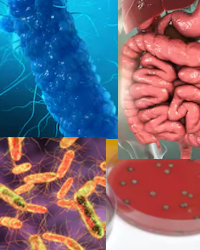Introduction to Foodborne Diseases
 The Centers for Disease Control (CDC) estimates that each year 48 million people get sick from a foodborne illness, 128,000 are hospitalized and 3000 die.
The Centers for Disease Control (CDC) estimates that each year 48 million people get sick from a foodborne illness, 128,000 are hospitalized and 3000 die.
It is estimated that 1 in 6 persons will contract a food borne illness annually.
In the last year, the frequency and scope of food recalls appear to have increased considerably with the variety of products being recalled ranging from fruit, meat, nuts, diary and vegetables to pet food.
The most prolific infective agents continue to be Salmonella, Listeria and E.Coli, while lesser known agent like Hepatitis A, Vibrio and Cyclospora are making a showing.
Whether recalls appear more frequently because there is more effective surveillance or because of increased publicity or because our food supply is less safe, it is nonetheless disconcerting, especially when the recall involves products sold in multiple states across the country under several brand names.
According to the food recall tracking company Stericycle, “the major drivers behind the increases in recalls include technological improvements in food testing, factory farming and growing automation in food production.”
Food can be recalled for a variety of reasons but mainly because bacteria contamination, cross contamination with another unrelated product, undeclared allergens, mislabeling, or quality control problems.
As eating out becomes more commonplace, it is vital that we educate ourselves about how to remain safe, but also recognize quickly when affected by a food borne bacteria.
Foodborne illnesses occur when food that was contaminated with bacteria or their spores is eaten. Some bacteria produce toxins that cause illness, even when they do not alter the appearance, flavor or odor of the food.
Bacteria can contaminate the food either while it is being grown, harvested, packaged or stored, and once ingested, the bacteria may continue to live and grow in the intestine and cause illness. Some bacteria can even cause several bouts of illness over a long period.
The likelihood of infection and the severity of the illness depend on how much of the toxin is consumed, the resistance of the host to the infectious agent, and the strain of bacteria present in the food.
This segment will cover the most common and emerging infective agents, the disease they cause and how it spreads, the foods they typically contaminate, the symptoms that they cause, and how to protect yourself.
Learn about all the organisms that can cause foodborne illnesses at https://www.cdc.gov/foodsafety/diseases/index.html
Additional References:
Clinical Microbiology made ridiculously simple. Edition 3. Mark Gladwin, M.D. and Bill Trattler, M.D.